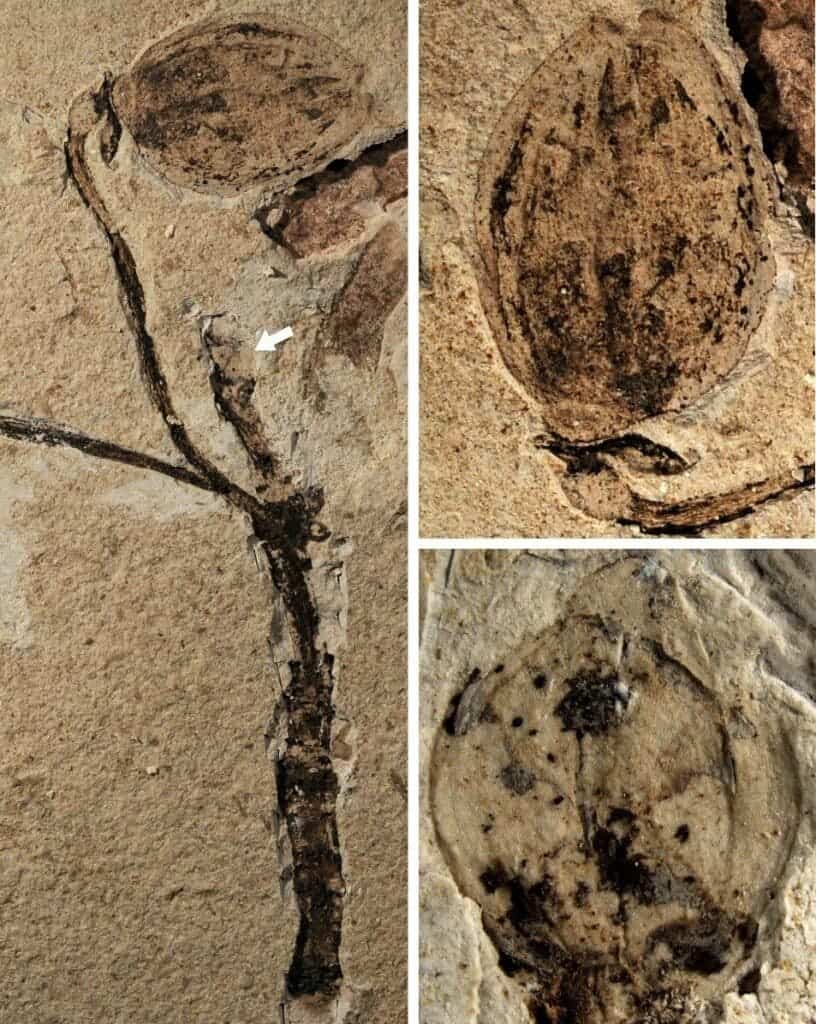
Paleontologists in China claim they may have found the earliest fossils of a flower bud to date. The findings suggest that flowering plants, or angiosperms, appeared tens of millions of years earlier than the fossil record previously suggested and help resolve one of the vexing problems plaguing Darwin’s theory of evolution by natural selection, which he described as an “abominable mystery”.
Flowering plants produce flowers and bear their seeds in fruits, unlike their gymnosperm peers that have unenclosed seeds and lack a flower. Examples of angiosperms include monocots like lilies, orchids, agaves, and grasses, as well as and dicots like roses, peas, sunflowers, oaks and maples. Gymnosperm examples include non-flowering evergreen plants such as pine, spruce, and fir trees.
Gymnosperms represent some of the oldest plant life in geological history. But once angiosperms appeared, they relatively quickly started replacing their older peers within the span of only a few tens of millions of years. To this day, angiosperms are by far the dominant form of plant life on Earth.
How did angiosperms spread so quickly? Why and when did they appear in the first place? How come they were already incredibly diverse by the time they were spotted in the earliest fossil records?
As Charles Darwin pondered these questions in the late 19th century, he couldn’t come up with a satisfying answer. The fact that flowering plants conquered the world so fast while all other species seem to have evolved gradually was a huge thorn in the side for the British naturalist, who proclaimed that natura non facit saltum, or nature makes no leap. But then came angiosperms who didn’t seem to get the memo.
In an 1879 letter to fellow botanist and explorer Dr. Joseph Hooker, Darwin wrote: “The rapid development as far as we can judge of all the higher plants within recent geological times is an abominable mystery.”
This puzzle was to biology what Fermat’s Last Theorem was to mathematics.
The mystery may be explained by the fact that angiosperms evolved much earlier than Darwin or his followers thought, according to a new study. Prof. Wang Xin from the Nanjing Institute of Geology and Palaeontology of the Chinese Academy of Sciences (NIGPAS), and colleagues have described the earliest fossil flower bud so far, which was found in pristine condition in Inner Mongolia, China.
The ancient flower bud, christened Florigerminis jurassica, is dated to more than 164 million years ago. It is without a doubt an angiosperm, judging from the presence of the flower bud, connected fruit, and leafy branch.
Previously, scientists had identified very ancient flower fossils dating back as far as 145 million years ago, in the case of Euanthus, or even 174 million years for Nanjinganthus, which was also found in China. But although these fossils seem to include seeds completely enclosed in an ovary, many experts were not convinced these were true angiosperms.
However, Florigerminis jurassica has a flower bud, fruit, and leafy branch — an unmistakable trio that cements the status of the ancient fossils as an undeniable angiosperm.
Flowers are notoriously difficult to fossilize, which partly explains Darwin’s mystery. The remarkable rare discovery of Florigerminis jurassica shows flowering plants were well on their way to dominating the planet since the Jurassic, demanding a rethinking of the timeline of angiosperm evolution.
The findings appeared in the journal Geological Society, London, Special Publications.


